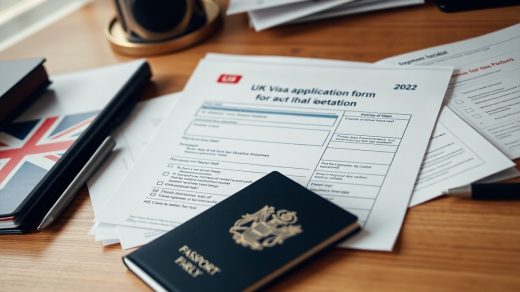Maternity leave is an crucial aspect of preparing for the arrival of your new child, ensuring that you have the time needed to bond and adjust. Understanding your rights and options under UK law is important for both you and your partner, as it impacts your family’s wellbeing during this significant life event. In this post, you’ll learn about the various maternity and paternity leave laws, eligibility criteria, and benefits you can access. For further details, check out Ben’s Guide to Maternity and Paternity Leave in the UK.
Key Takeaways:
- Maternity Leave: Mothers are entitled to up to 52 weeks of maternity leave, which includes 26 weeks of Ordinary Maternity Leave and 26 weeks of Additional Maternity Leave.
- Paternity Leave: Fathers or partners can take up to 2 weeks of paid Paternity Leave, provided they meet certain eligibility criteria.
- Shared Parental Leave: Parents can choose to share up to 50 weeks of leave and up to 37 weeks of pay, allowing more flexibility in how they care for their child.
Overview of Maternity Leave Laws
The UK maternity leave laws provide crucial time off for mothers around the time of childbirth. These laws are designed to support you through your pregnancy, allowing you to rest and bond with your newborn. The regulations govern the duration of leave, your eligibility, and the pay you may receive during this period, ensuring you have the right to take time off without jeopardizing your employment. Understanding these laws is vital for planning your maternity leave effectively.
Eligibility Criteria
Before you can take maternity leave, you must meet specific eligibility criteria set forth by the UK government. Generally, you need to be an employee and have been working for your employer for at least 26 weeks by the 15th week before your due date. Additionally, you should inform your employer of your pregnancy and your intention to take leave within the appropriate time frame, typically at least 15 weeks before your due date.
Duration and Pay
Around 90% of your average weekly earnings may be paid for the first six weeks of maternity leave, followed by a lower statutory rate for the subsequent 33 weeks. Maternity leave can last up to 52 weeks, allowing you ample time to adjust to your new role as a parent.
Even though you are entitled to 52 weeks of maternity leave, you can choose to return to work sooner if you wish. The first six weeks offer the most financial support, while the remaining weeks may provide a more basic statutory maternity pay. It’s important to plan your finances accordingly and consider your employer’s policies on maternity leave, as some may offer enhanced pay or additional benefits. By understanding your rights and options, you can ensure a smoother transition into motherhood.


Overview of Paternity Leave Laws
It is necessary to understand the paternity leave laws in the UK, as they provide vital rights and benefits for new fathers. Paternity leave allows you to take time off work to support your partner during the early stages of parenthood, ensuring you can bond with your new child. Knowing the specifics of these laws, including eligibility, duration, and pay, can help you make informed decisions about your parental leave options.
Eligibility Criteria
With paternity leave, you must meet certain eligibility criteria to qualify for the leave and associated pay. These criteria generally require you to be an employee and to have been with your employer for at least 26 weeks by the time your baby is due or if you’re adopting. You must also be taking the leave to care for your baby or support your partner during this period.
Duration and Pay
Against common misconceptions, paternity leave in the UK typically lasts for one or two weeks, depending on your choice. Your statutory pay during this time is calculated at a rate set by the government, which can change annually. If your employer offers enhanced paternity pay, this may lead to more favorable terms, so be sure to check your company’s policy.
For instance, if you choose to take one week of paternity leave, you will receive statutory pay that is currently set at a specific weekly amount or 90% of your average weekly earnings, whichever is lower. Alternatively, should you opt for two weeks, your pay structure remains the same but is applied for both weeks. Some employers provide additional benefits, such as full pay for the duration of paternity leave, which you might find beneficial. Always review your employment contract and discuss your options with your HR department for clarity on what you can expect.
Shared Parental Leave
After the birth or adoption of a child, Shared Parental Leave (SPL) offers parents the flexibility to share statutory leave. This allows you and your partner to take time off work in a way that best suits your family’s needs, providing an opportunity to bond with your new baby together. This arrangement can help you both manage childcare responsibilities by splitting the leave period.
Key Features
To understand Shared Parental Leave, consider these key features:
- You can share up to 50 weeks of leave with your partner.
- You can take your leave in one continuous period or as separate blocks.
- You may qualify for Shared Parental Pay during your leave.
- Your employer must be notified eight weeks in advance to take SPL.
- It is available to you if you meet eligibility criteria established by your employer.
The flexibility of SPL is designed to benefit families aiming for a shared parenting experience.
Eligibility and How It Works
Shared Parental Leave allows you and your spouse or partner to take time off together or separately, depending on your needs. To qualify, both parents must meet specific eligibility criteria, which usually include being employees and having worked with their employer for a minimum period. You can begin SPL once your partner has ended their maternity leave, and you will be required to give notice and provide some documentation to your employer.
And, while planning your Shared Parental Leave, ensure you communicate with your employer regarding your intention to take SPL. Your employer will provide details on how to apply and the required notice periods. This process is fundamental to ensuring you can utilize the leave effectively for your family’s needs.
Rights and Protections for Parents
All parents in the UK have specific rights and protections when it comes to maternity and paternity leave. These rights aim to ensure that you can take time off work without fear of losing your job or facing unfair treatment. Understanding these protections can empower you to make informed choices during this significant time in your life.
Employment Rights During Leave
Any parent entitled to maternity or paternity leave enjoys employment rights that protect your position. This includes maintaining your contractual benefits, such as your salary, sick leave entitlements, and the right to return to your job. Your employer cannot dismiss you or treat you less favorably due to your leave, ensuring stability during this pivotal time.
Anti-Discrimination Protections
Parents are afforded strong anti-discrimination protections under UK law, prohibiting any unfavorable treatment linked to maternity or paternity leave. These protections mean that you cannot be discriminated against based on your status as a parent, ensuring you can enjoy your leave without fearing repercussions in your workplace.
It is important to know that these anti-discrimination protections extend beyond just the leave period. If you feel you have been treated unfairly or discriminated against due to your parental status, you have the right to raise a complaint with your employer or take further action through legal channels. Your rights are there to support you, ensuring that you feel secure and valued in your workplace while transitioning to parenthood.
Recent Changes and Future Directions
Many recent developments in the UK maternity and paternity leave laws are aimed at enhancing your work-life balance. The government continually reviews policies to adapt to the evolving needs of families, demonstrating a commitment towards more inclusive practices. Future directions focus on increasing accessibility and flexibility for parents, ensuring you can better manage family responsibilities alongside your professional duties.
Legislative Developments
Along with the ongoing reforms, key legislative changes have introduced more generous parental leave entitlements. These updates seek to ensure that you can take time off without the fear of job insecurity, empowering you to focus on your growing family. Government consultations have been conducted to explore further enhancements that could benefit all working parents.
Trends in Family Leave Policies
Policies regarding family leave continue to evolve, reflecting a shift in workplace culture. Employers are increasingly recognizing the importance of supporting parents during this vital time.
Another significant trend in family leave policies is the rise of flexible working arrangements, which give you the option to balance your professional and personal lives. Companies are also offering enhanced parental leave packages beyond the statutory minimum, allowing you to take additional time off if needed. Additionally, there is a growing emphasis on shared parental leave, promoting the idea that both parents can play active roles in childcare. This shift caters to diverse family structures, ensuring that your unique circumstances are met with understanding and support.
Comparison with International Standards
Despite the UK having established maternity and paternity leave laws, there is significant variation when compared to international standards. Many countries provide more extended leave periods and higher compensation rates, which can enhance parental bonding and child development. Understanding these differences can help you appreciate the broader context of parental leave policies globally.
International Leave Policies
| Country | Maternity Leave |
|---|---|
| UK | 52 weeks (39 weeks paid) |
| Sweden | 480 days (390 days paid) |
| Canada | 18 months (12 months paid) |
| Germany | 14 weeks (paid at 100%) |
Global Best Practices
Below international benchmarks, several countries implement best practices that benefit families and children substantially. For instance, Sweden’s generous leave policy encourages both parents to share the leave, promoting gender equality at home. By looking at these methods, you can see how robust parental leave contributes to social infrastructure.
Lessons for the UK
Above all, analyzing international policies can provide valuable insights for potential reforms to the UK’s system. Countries that offer more substantial support during early child-rearing tend to enjoy healthier outcomes for both parents and children, indicating that your government could benefit from adjusting its existing policies.
Indeed, exploring the lessons learned from abroad may inspire the UK to enhance its maternity and paternity leave laws. You may find that including longer leave periods and improved pay can not only support families but also lead to overall societal benefits. Engaging with successful models from countries like Sweden and Canada could inform future discussions on how best to serve parents and children in the UK. As policies evolve, your role in advocating for these changes becomes invaluable.
To wrap up
Conclusively, understanding maternity and paternity leave laws in the UK is vital for you as a parent. These regulations provide you with rights and support during one of life’s most significant transitions. You should familiarize yourself with the specific entitlements and application processes to ensure that you can maximize your leave and balance work with family responsibilities. By doing so, you can protect your interests and enhance your family’s early experiences together.
FAQ
Q: What are the basic maternity leave entitlements in the UK?
A: In the UK, eligible employees are entitled to a maximum of 52 weeks of maternity leave. This is divided into 26 weeks of ordinary maternity leave and 26 weeks of additional maternity leave. Employees can take maternity leave regardless of how long they have been with their employer, provided they meet certain eligibility criteria, including informing their employer at least 15 weeks before the expected due date.
Q: What are the key differences between maternity and paternity leave in the UK?
A: Maternity leave is available to birthing parents and provides a longer duration of leave—up to 52 weeks—while paternity leave is typically shorter. Fathers or partners of the birthing parent are entitled to up to 2 weeks of paternity leave. Additionally, paternity leave must be taken within 56 days of the child’s birth, and the employee must work for the employer for at least 26 weeks by the time the baby is born to qualify.
Q: How much maternity or paternity pay can employees receive in the UK?
A: Statutory Maternity Pay (SMP) is available for up to 39 weeks at a rate of 90% of the employee’s average weekly earnings for the first six weeks, followed by a fixed rate, which is set annually by the government, for the remaining 33 weeks. Statutory Paternity Pay (SPP) provides eligible employees with a fixed weekly rate for up to 2 weeks. To qualify for these payments, employees must satisfy specific eligibility criteria, including having worked for their employer for a minimum period.
Q: Can employees take shared parental leave after maternity or paternity leave?
A: Yes, eligible parents can opt to take Shared Parental Leave (SPL) if they meet the necessary criteria. This allows parents to share up to 50 weeks of leave and 37 weeks of pay after the birth or adoption of their child. Employees can take SPL in blocks or as continuous periods, providing flexibility in how to care for their child during the first year. Conditions apply, and both parents must meet separate qualifying conditions.
Q: What is the procedure for notifying an employer about taking maternity or paternity leave?
A: For maternity leave, employees must inform their employer at least 15 weeks before the due date. This notification should include the intended start date of the leave. For paternity leave, the employee must notify the employer of the intention to take leave at least 28 days before the baby is due, and they should also specify how long they wish to take. Employers typically have their own policies regarding notification, so it is advisable to check with them directly.



Recent Comments